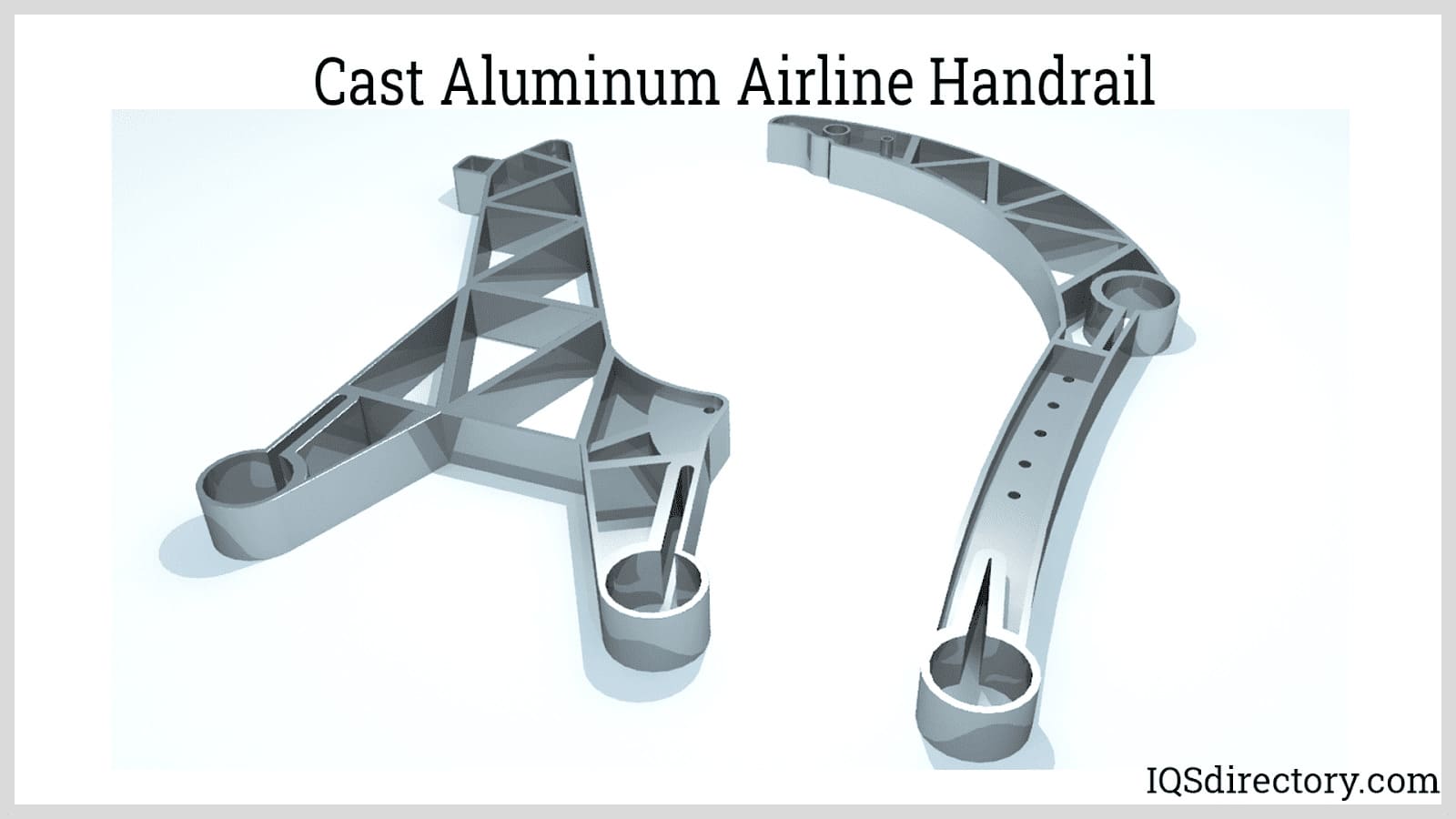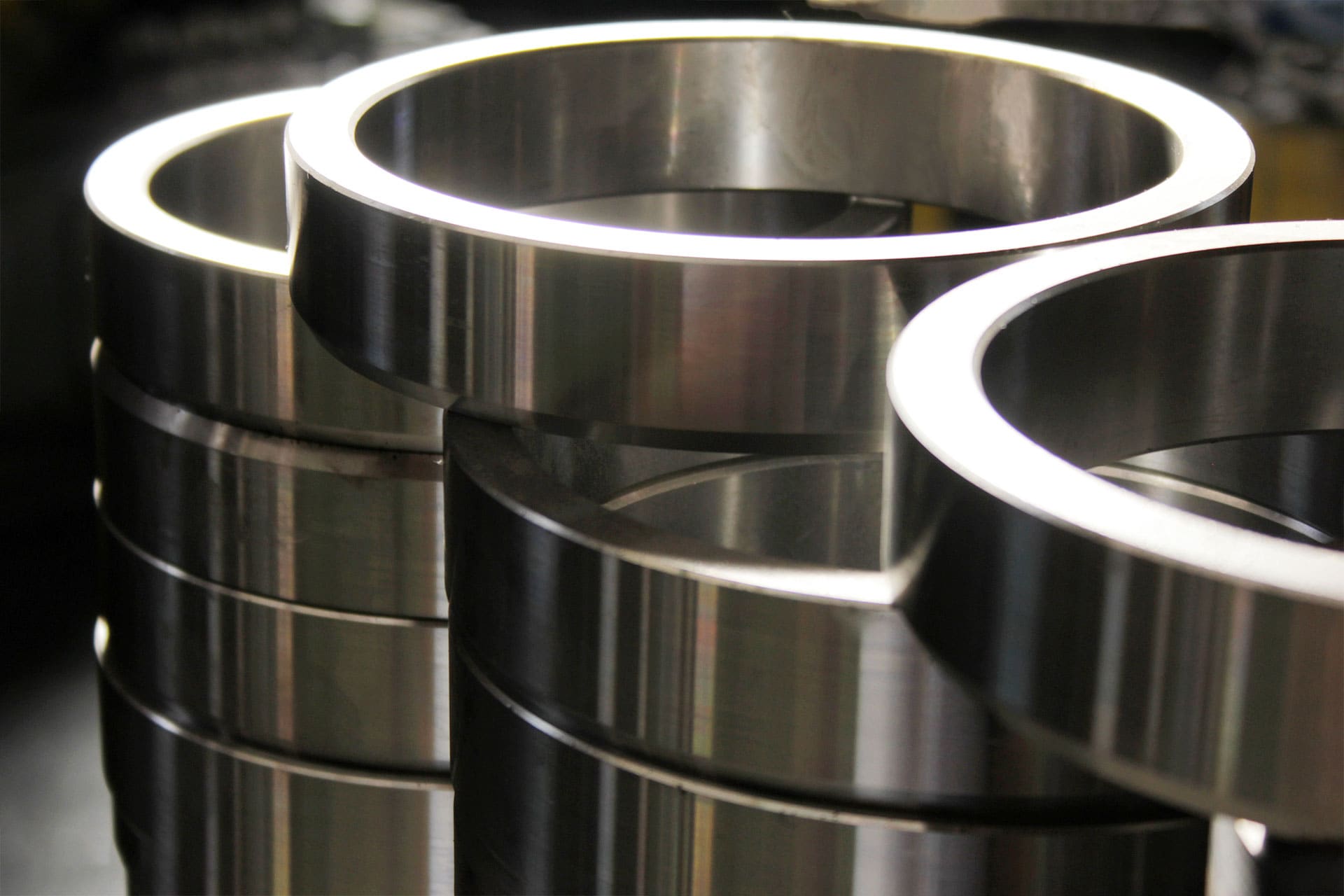How Aluminum Castings enhance product performance in modern industries
Wiki Article
Revealing the Conveniences and Practical Use Aluminum Castings in Today's Market
Aluminum castings have actually ended up being significantly relevant in different sectors because of their special features. Their lightweight nature and resistance to rust make them suitable for requiring applications. Furthermore, the superior strength-to-weight ratio uses significant advantages in style and manufacturing. As markets remain to discover their capacity, the complete extent of aluminum castings' advantages and applications remains to be completely revealed. What exists in advance for this versatile material?The Lightweight Benefit of Light Weight Aluminum Castings
Although several products are utilized in production, aluminum castings attract attention largely because of their lightweight homes. This particular makes aluminum castings an eye-catching selection for different sectors, especially in aerospace and auto applications, where weight decrease is important for improving gas effectiveness and efficiency. The light-weight nature of aluminum enables producers to create parts that are much easier to install and deal with, eventually decreasing labor expenses.The capacity to create intricate shapes without considerable weight charges enables developers to introduce while keeping architectural honesty. Aluminum castings can properly change much heavier products, causing significant savings in delivery and operational costs. Their light-weight advantage likewise adds to boosted item longevity, as lighter elements commonly result in minimized deterioration on machinery. Overall, the lightweight residential properties of aluminum castings offer producers with an one-upmanship, promoting improvements in item design and efficiency throughout various fields.

Extraordinary Deterioration Resistance
Light weight aluminum castings have an all-natural resistance to oxidation, which substantially improves their long life in various atmospheres. This fundamental building not just adds to their toughness yet additionally aligns with the light-weight advantage that aluminum offers. Therefore, aluminum castings are progressively recognized for their remarkable rust resistance in various applications.
Normally Immune to Oxidation
Among the standout features of aluminum castings is their exceptional corrosion resistance, which originates from an all-natural oxidation process. When exposed to air, light weight aluminum responds to form a thin, safety layer of light weight aluminum oxide. This layer acts as a barrier versus additional oxidation and protects the underlying steel from corrosive components such as moisture and salts. Unlike various other steels, this oxide layer is self-repairing; if harmed, it promptly reforms when revealed to air. This distinct home boosts the durability of aluminum castings in numerous settings, making them suitable for applications in industries such as aerospace, auto, and marine. Consequently, the all-natural resistance to oxidation greatly minimizes upkeep costs and increases the integrity of aluminum castings in requiring conditions.Light-weight Sturdiness Advantage
The lightweight nature of light weight aluminum spreadings contributes greatly to their durability, making them a helpful option in different markets. This phenomenal toughness is mostly credited to light weight aluminum's inherent resistance to rust, which is enhanced additionally via anodizing and various other surface area treatments. Unlike numerous steels, light weight aluminum does not rust; instead, it creates a protective oxide layer that guards it from environmental damage. This property is specifically useful in markets such as vehicle and aerospace, where weight decrease is crucial without endangering stamina. Additionally, the durability of light weight aluminum castings lessens maintenance expenses and replacements, giving financial advantages over time. Their lightweight longevity and deterioration resistance placement light weight aluminum spreadings as a remarkable product for modern manufacturing applications.
Superior Strength-to-Weight Proportion
An amazing feature of light weight aluminum spreadings is their premium strength-to-weight proportion, which makes them extremely preferable in various applications. This intrinsic residential property permits aluminum spreadings to hold up against significant anxiety while remaining light-weight, an essential consider markets such as aerospace, automotive, and manufacturing. Engineers commonly prefer aluminum castings for parts that call for both sturdiness and decreased weight, boosting gas performance and efficiency.The high strength-to-weight ratio also helps with the design of complex shapes and structures, making light weight aluminum castings functional for complicated applications. The ability to preserve structural stability under challenging problems warranties longevity and dependability in items, from aircraft frames to automotive components. This advantage adds to the expanding trend of making use of light weight aluminum spreadings in ingenious styles, eventually leading to boosted functionality and performance throughout varied industries. The superior strength-to-weight ratio of aluminum spreadings positions them as a critical product in contemporary design and production.
Cost-Effectiveness in Manufacturing
Cost-effectiveness in aluminum casting manufacturing is mainly accomplished through minimized material waste and effective production processes. By enhancing layouts and making use of advanced strategies, suppliers can lessen excess material use while maintaining high quality standards. This strategy not only lowers production costs but likewise contributes to extra sustainable practices within the sector.Minimized Product Waste
Minimizing material waste in light weight aluminum casting procedures substantially enhances manufacturing performance. By optimizing the design and manufacturing strategies, business can decrease excess scrap and boost source use. This decrease in waste not only reduces material costs yet also contributes to a more lasting manufacturing design. The ability to reuse aluminum further supports cost-effectiveness, permitting producers to reclaim and reuse materials without compromising quality. As the sector significantly concentrates on sustainability, decreased material waste lines up with ecological objectives while concurrently enhancing earnings. Ultimately, efficient use of basic materials reinforces the affordable position of companies in the market, making aluminum castings a desirable option in numerous applications. The strategic method to lessening waste mirrors a dedication to both eco-friendly and economic obligation.Effective Production Processes
While traditional manufacturing procedures can incur substantial costs, light weight aluminum spreading provides a more reliable option that improves overall manufacturing profitability. This approach reduces material waste and permits precise control over the production procedure, resulting in lowered labor and operational costs. The ability to produce complicated forms with less steps additionally enhances production, adding to shorter preparations. Furthermore, aluminum's light-weight nature and outstanding thermal conductivity permit power financial savings during production and in the final application. By utilizing contemporary spreading innovations, manufacturers can attain higher throughput without sacrificing high quality. Subsequently, aluminum spreading attracts attention as a cost-effective remedy, making it an appealing choice for businesses intending to enhance their manufacturing procedures in today's open market.Adaptability Throughout Industries
Aluminum castings demonstrate remarkable adaptability throughout numerous markets, as they can be tailored to satisfy certain demands and applications. In the vehicle field, aluminum castings are utilized in engine blocks, transmission real estates, and wheels, supplying light-weight yet long lasting options that improve gas performance. The aerospace industry likewise takes advantage of light weight aluminum castings, utilizing them in architectural parts and engine parts as a result of their strength-to-weight ratio.In the durable goods field, suppliers use light weight aluminum castings for items varying from cooking equipment to furnishings, providing both visual appeal and capability. The electronic devices market uses light weight aluminum spreadings for housings and warmth sinks, making sure reliable thermal management. Furthermore, the building and construction market leverages aluminum spreadings for architectural elements and building elements, enhancing sturdiness and layout versatility. This broad applicability highlights light weight aluminum spreadings as a crucial resource, satisfying the diverse requirements of different markets while maintaining high performance and reliability.
Sustainability and Environmental Impact
As markets significantly focus on lasting techniques, light weight aluminum castings emerge as a green choice as a result of their recyclability and low environmental footprint. Light weight aluminum is just one of one of the most recycled materials internationally, with the ability to be repurposed multiple times without degradation of high quality. This particular significantly reduces the demand for raw materials and energy consumption related to key light weight aluminum manufacturing, which is energy-intensive.In addition, light weight aluminum castings add to lightweight layouts, bring about fuel performance in transportation applications such as aerospace and vehicle industries. Their longevity and resistance to corrosion prolong item life expectancies, additionally decreasing waste and resource usage over time. Moreover, numerous makers are embracing responsible sourcing and environmentally friendly production techniques, enhancing the sustainability of light weight aluminum spreading procedures. Generally, aluminum castings stand for a functional option for organizations aiming to reduce their environmental impact while accomplishing performance and effectiveness.
Developments in Aluminum Casting Technologies
Current advancements in light weight aluminum spreading technologies have significantly boosted the effectiveness and quality of manufacturing processes. Innovations such as 3D printing and progressed mold-making strategies have actually enabled manufacturers to produce intricate layouts with decreased product waste. This shift not only improves the accuracy of actors parts yet additionally reduces lead times, enabling quick prototyping and faster image source market entry.
Moreover, the consolidation of advanced computer simulations help in forecasting potential defects throughout casting, leading to higher-quality results (Aluminum Castings). Using light-weight alloys has likewise added to the development of stronger, more durable items, dealing with industries ranging from auto to aerospace
Furthermore, automated casting processes have actually arised, reducing human mistake and boosting manufacturing speed. Collectively, these innovations are changing the aluminum casting landscape, driving higher competitiveness and sustainability in manufacturing. As industries continue to advance, these modern technologies will play a necessary role in conference future needs for performance and top quality.
Regularly Asked Concerns
How Do Light Weight Aluminum Castings Compare to Other Steels in Terms of Thermal Conductivity?
Light weight aluminum castings exhibit remarkable thermal conductivity contrasted to several metals, such as steel and iron - Aluminum Castings. Their lightweight nature and effective heat distribution make them suitable for applications needing reliable thermal administration in various marketsWhat Are the Common Flaws Found in Light Weight Aluminum Castings?
Usual problems in light weight aluminum spreadings include porosity, shrinking, additions, and surface abnormalities. These concerns typically develop from inappropriate air conditioning rates, inadequate mold style, or contaminations, impacting the overall high quality and performance of the end product.Can Aluminum Castings Be Recycled, and How?
Aluminum spreadings can be reused effectively. The process includes gathering, melting, and reforming reference the aluminum, which reduces waste and preserves sources. This reusing adds to sustainability while preserving the product's homes for future use.What Are the Common Lead Times for Light Weight Aluminum Spreading Production?
Typically, preparations for aluminum spreading production variety from 2 to six weeks, depending upon elements such as intricacy, tooling needs, and production quantity. Effectiveness can boost with recognized vendor partnerships and enhanced production procedures.Just how Does the Surface Area Finish Affect Light Weight Aluminum Spreading Performance?
The surface coating markedly influences aluminum spreading efficiency by affecting rust resistance, aesthetic high quality, and friction characteristics. A smoother finish boosts longevity and performance, while a rougher appearance can improve attachment visit this website for subsequent coverings or treatments.Several materials are made use of in manufacturing, aluminum spreadings stand out mostly due to their light-weight buildings. When subjected to air, aluminum reacts to create a slim, protective layer of aluminum oxide. Cost-effectiveness in aluminum casting manufacturing is mostly accomplished via reduced product waste and reliable production procedures. Lowering material waste in aluminum spreading procedures significantly enhances production efficiency. Eventually, efficient use of raw materials enhances the affordable position of companies in the market, making aluminum castings a beneficial option in numerous applications.
Report this wiki page